What is Mold?
Mold and mildew are forms of fungi that multiply using airborne spores and are known to grow in damp areas2. They can grow both inside and outside your home if it’s damp2. They are often found on logs and leaves, in your basement, or even in the cabinet under your sink1.
What’s the Difference Between Mold and Mildew?
Mildew is the name for certain kinds of mold or fungus5, usually describing a flat mold growth5. Molds can thrive on any organic material, whereas mildew often lives on shower walls and windowsills5.
Types of Mold
There are roughly 1,000 types of mold in the United States1. But not all kinds will cause an allergic reaction, and being allergic to one type of mold doesn’t mean you’ll react badly to all of them3. Some of the most common types of mold that can cause allergies include4:
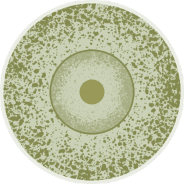
Alternaria
A kind of fungi
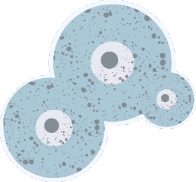
Aspergillus
These are known to cause sinus issues
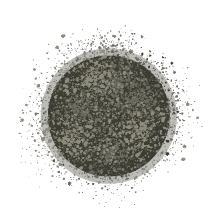
Cladosporium
Includes many of the most common green, brown and black molds
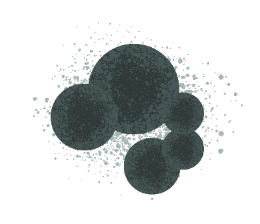
Cladosporium
Often associated with food that has ‘gone bad’
What Does Mold Look Like?
Different molds have different appearances and textures, but they often look like discoloration or stains on a surface – and are frequently mistaken for those very things.
Molds can come in a variety of colors, including:
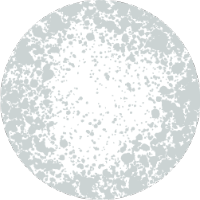
White
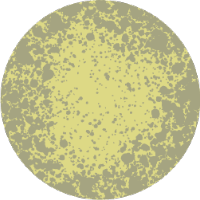
Yellow
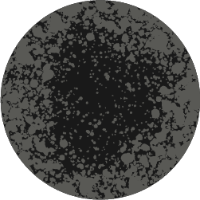
Black
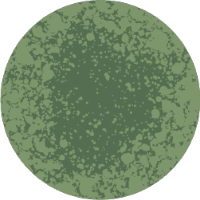
Green

Blue
Some will have a fuzzy or velvety texture that makes them easier to identify. Others can have a rough appearance instead.
What Does Mold Smell Like?

The smell of mold can vary, but here are some common characteristics:
Stale/musty – the most commonplace comparison is usually old socks or a stuffy attic
Earthy – resembling a dense forest, or rotting wood
Damp – similar to wet dog fur or a dank locker room
Rotting/fermenting – like aging cheese or fermenting alcohol
Tangy/sour – similar to a sweaty odor following an intense workout
None of these characteristics are pleasant, and as the mold spreads over time, the smell can get worse. These smells are caused by microbial volatile organic compounds (mVOCs), produced by mold, and released into the air.
When is Mold Allergy Season?
Mold allergy season isn’t simple to pin down, as different molds are active at different times of the year. Most outdoor molds are inactive during the winter, and are more active during the spring and fall as they thrive in moist environments and commonly grow on plants that the winter cold kills2. Indoor molds, meanwhile, can develop at any time of year in damp bathrooms, kitchens or basements2. In other words, there is no mold allergy season as such. Instead, understanding which mold you may be allergic to and learning when and where it is most common, is usually the best course of action.
Why Does Mold Cause Allergies?
If you have an allergy to mold, you may experience an allergic reaction to the mold spores in the air4. Similar to pollen and other airborne allergens, when mold spores are released, they are easily breathed in4 through the nose or mouth.
An allergic reaction to mold occurs when your body reacts to these mold spores as a threat, and fights back against the spores with an immune response4. Read on to learn about the symptoms that you may experience as a result of an allergic reaction to mold.
Mold & Mildew Allergy Symptoms
Mold and mildew allergy symptoms are often similar to the symptoms of hay fever. Allergic reactions to mold usually resemble seasonal allergies, and symptoms may include4:

Runny nose*
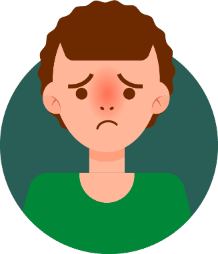
Nasal congestion
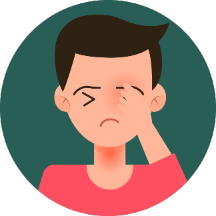
Itchy eyes and/or throat*

Coughing
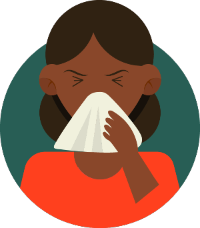
Sneezing*
If you’re asthmatic, it’s possible that your mold allergy could also trigger an asthma attack4.
Mold & Mildew Allergy: Serious Symptoms
Sometimes, mold and mildew allergies can cause more serious symptoms, including4:
Skin rash/hives
Flu-like symptoms, including fever
Feeling generally unwell
Mold & Mildew Allergy: Dangerous Symptoms
Occasionally, such allergies can have even more serious effects. Some molds and mildew can cause4:
Lung infections
Anaphylaxis (life-threatening lung issues)
Indoor vs. Outdoor Mold Allergy Symptoms
The mold allergy symptoms you experience will likely be the same regardless if they are caused by indoor or outdoor mold. The main difference between indoor and outdoor mold allergy symptoms is when you might experience them.
If your symptoms are triggered by indoor mold, you’ll likely experience symptoms throughout the year. You may also feel particularly bad after spending time indoors near mold growth.
If your symptoms are triggered by outdoor mold, it is likely that you will only experience symptoms during wetter seasons, like spring and fall, when the ground outside is damp enough for mold to grow. You may also feel worse after spending time outside when molds are growing and producing spores.
How to Prevent Mold Allergies
Wet or damp surfaces indoors – especially in bathrooms and basements – can attract mold and help it to spread.You can help prevent indoor mold allergies by finding and cleaning up existing mold and making it harder for mold to grow in your home – mainly by keeping surfaces dry4.

Dehumidify
Tackle this problem at base(ment) level with a dehumidifier. These handy devices will help you to keep the humidity below 50%. Change the filter and clean it regularly as instructed.

Sort Out Soil
Indoor plants are really pretty, but they can be a haven for fungal spores. Make sure your plant containers don’t develop mold, and cover the soil with aquarium gravel and small pebbles.

Tackle Towels
Water sports are most popular in summer months, which means wet towels. Wash them immediately or hang out to dry. And aim to switch your bath towel out at least once a week too.

Watch the Washer
Mold tends to develop in front loading washing machines. Avoid this issue by leaving the door open for at least an hour after each wash and wiping the seal area down with a solution of water and bleach every couple of weeks.
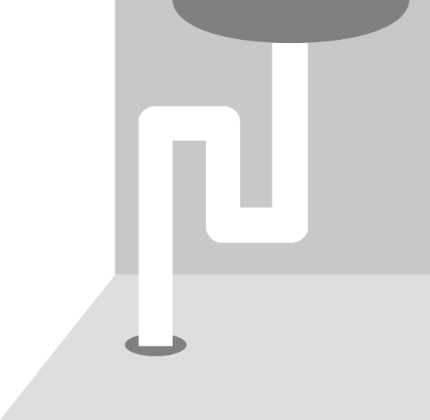
Clean the Cabinets
The smallest plumbing leak can lead to a whole lot of mold growth. Keep the area under your sink mold-free by checking for leaks, puddles and other damp areas.

Aim for the AC
Air conditioning units trap dust and pollen while absorbing moisture from the air - a surefire recipe for mold growth if you don’t run your AC regularly. To keep it mold-free, clear your unit yourself, hire a professional or better yet, run the AC for at least 10 minutes a day.
Top tips and tricks for preventing mold include4:
Using a dehumidifier to keep humidity levels below 50%
Removing indoor houseplants – or ensuring they stay free from mold growth
Keeping your washing machine clean and dry when not in use
Regularly cleaning and drying out damp cabinets – i.e. under your sinks
Washing towels frequently and ensuring they dry fully
Fixing leaky faucets and pipes
Making sure rooms are properly ventilated
Using a vented exhaust fan to remove excess moisture
Using cleaning solutions designed to kill mold and mildew
You can also try to prevent or reduce outdoor mold allergy symptoms by staying indoors when mold counts are high. Keeping damp and decaying leaves and wood out of your front or back yard should also help to reduce the places mold can grow4.
How to Get Rid of Mold
If you have mold in your home, you need to clean it up4! Household cleaning products designed to get rid of black mold and other types are usually easy to find. Be sure to check labels to see if the product is indicated to use against mold. Some tips for getting rid of mold:
Remember to wear protective clothing (gloves, mask, etc.) when cleaning up mold to reduce the impact of your allergy
If you have a particularly severe allergy, you might need professional help to remove mold from your home. This is especially likely in situations involving dirtied sewage water4.
You should also throw away and replace any carpets, rugs or other textiles that have been soaked and not dried correctly, or items like old ceiling tiles that have absorbed moisture and won’t clean completely4
How to Treat Mold Allergies
If you have a mold allergy, avoiding mold as much as possible is the best way to manage your symptoms4. You can reduce your exposure with the following techniques4:
Take a shower after coming inside to wash out any mold spores in your hair
Fix leaking faucets and pipes to reduce dampness in bathrooms and kitchens
Remove carpets that can retain moisture from your basement or other damp areas
Clean mold off walls using a vinegar solution
You can also try using antihistamine medications to help treat your mold allergy symptoms4.
ZYRTEC®’s range of tablets, liquid gels, and product that combines decongestant with cetirizine, are designed to offer 24-hour relief from common allergens, including mold and mildew.
References
https://acaai.org/allergies/allergic-conditions/mold-allergies/
https://www.mayoclinic.org/diseases-conditions/mold-allergy/symptoms-causes/syc-20351519
https://my.clevelandclinic.org/health/diseases/22309-mold-allergy
https://www.epa.gov/mold/what-difference-between-mold-and-mildew
https://www.cdc.gov/mold/faqs.htm,
https://www.epa.gov/mold/how-can-i-tell-if-i-have-mold-problem
Links to other parties’ articles and websites are provided for convenience only. Kenvue is not responsible for their content.

